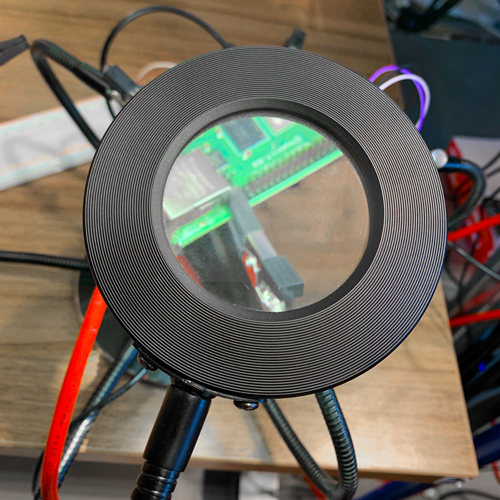We are particularly proud when young people decide to shape their professional future with us. Therefore, we support our trainees in all their projects and give them room for new ideas.
Throughout their training, we challenge and encourage our trainees from the very beginning. They go through all the departments of our company that are relevant to their training and receive detailed familiarization with the operational processes. In addition, planning, designing and implementing their own projects, taking into account the existing framework plans, are also part of the training.
In the course of his apprenticeship as an IT systems electronics technician, our trainee Maurice decided to focus on the topic of Raspberry Pi. With the help of the Cybertrading Weather Station he constructed himself, he wants to expand and further deepen his software and hardware knowledge. He told us in detail how exactly the project went and what Maurice was able to learn in the process:
How did you come to your project?
"In order to get some variety in my daily tasks at Cybertrading and to learn even more, I always get projects from my trainers as part of my training. These projects are supposed to help me deepen and expand my software and hardware knowledge. Most of the time, these are internal projects that my colleagues suggest to me in order to broaden my horizons. But I can also develop and contribute my own project ideas at any time. I can then present my ideas to the team and my experienced colleagues advise me on which project fits my level of training. Since I'm very interested in the topic of Raspberry Pi, I researched what tasks there are to go with it."
Why did you choose a weather station as a project?
"I had found the weather station project directly at Raspberry Pi Projects and it had fascinated me immediately. It covered many areas that interested me and in which I wanted to deepen my knowledge. I particularly liked the fact that we can collect weather data in-house, which all employees can access. When I proposed this topic to the team, everyone was quickly convinced and supported me in starting the project. We thought long and hard about what to call the weather station. We lovingly christened it "Project Petrus" after the apostle Simon Peter, who according to popular belief was held responsible for the weather, but especially for rainy weather."
How did you prepare for the project?
"To prepare myself for the project, I studied Python3 programming. Because I had no previous knowledge of this, I had to acquire the basic knowledge before starting the project. Researching suitable sensors was also part of my preparation. Since this Raspberry Pi project consists of many different components, there is no ready-made weather station set that I could have worked with. So we looked for and bought all the sensors we needed individually, e.g. temperature, wind or rain sensors. The optimal power supply was also part of my intensive research in advance. There are many ways to supply the sensors and the station with power. In the end, we in the team decided on the environmentally friendly form, solar cells."
What challenges did you have to overcome during your project?
"There were some challenges for me to overcome as I had very little knowledge and experience until then. Be it constructing a mount or getting the sensors to work. But everyone from the team contributed something to solve the problems quickly. When I couldn't find a solution myself, my colleagues would come up with an idea or a way to help me solve the problems. Another challenge was the programming, because we needed individual programmes to query the sensors and each sensor has a different query type. However, by researching on the internet and certain forums, and with the help of my colleagues, I was able to overcome this challenge."

What was particularly exciting about your project and what were you able to learn?
"In the end, where I had the biggest challenges, I learned the most. I am now much more well-read in Python than before and I also understand how to use a Raspberry Pi very well now. I also particularly enjoyed constructing my own mount. With a bit of tinkering and discarded parts, it was then built up to be weatherproof and stable. In the end, I am really proud of "Project Petrus", and rightly so in the opinion of my colleagues.”

Project Petrus a training project with high and low pressure areas.